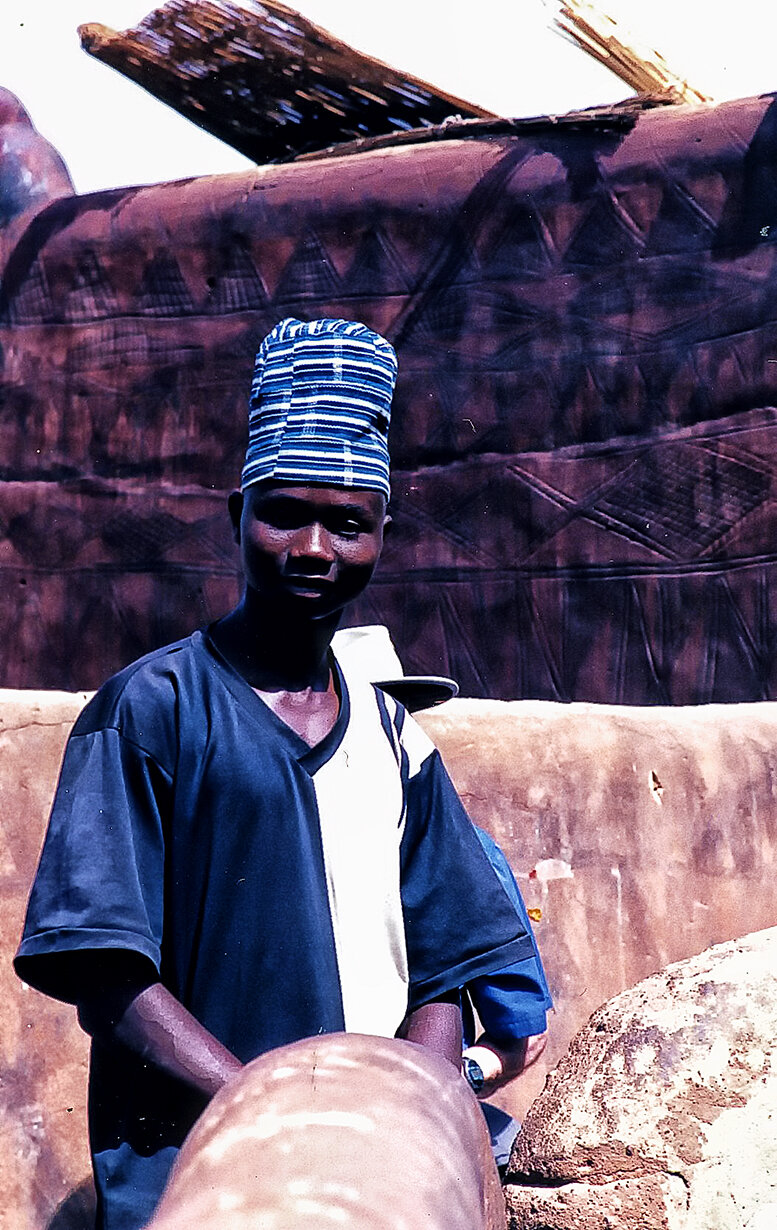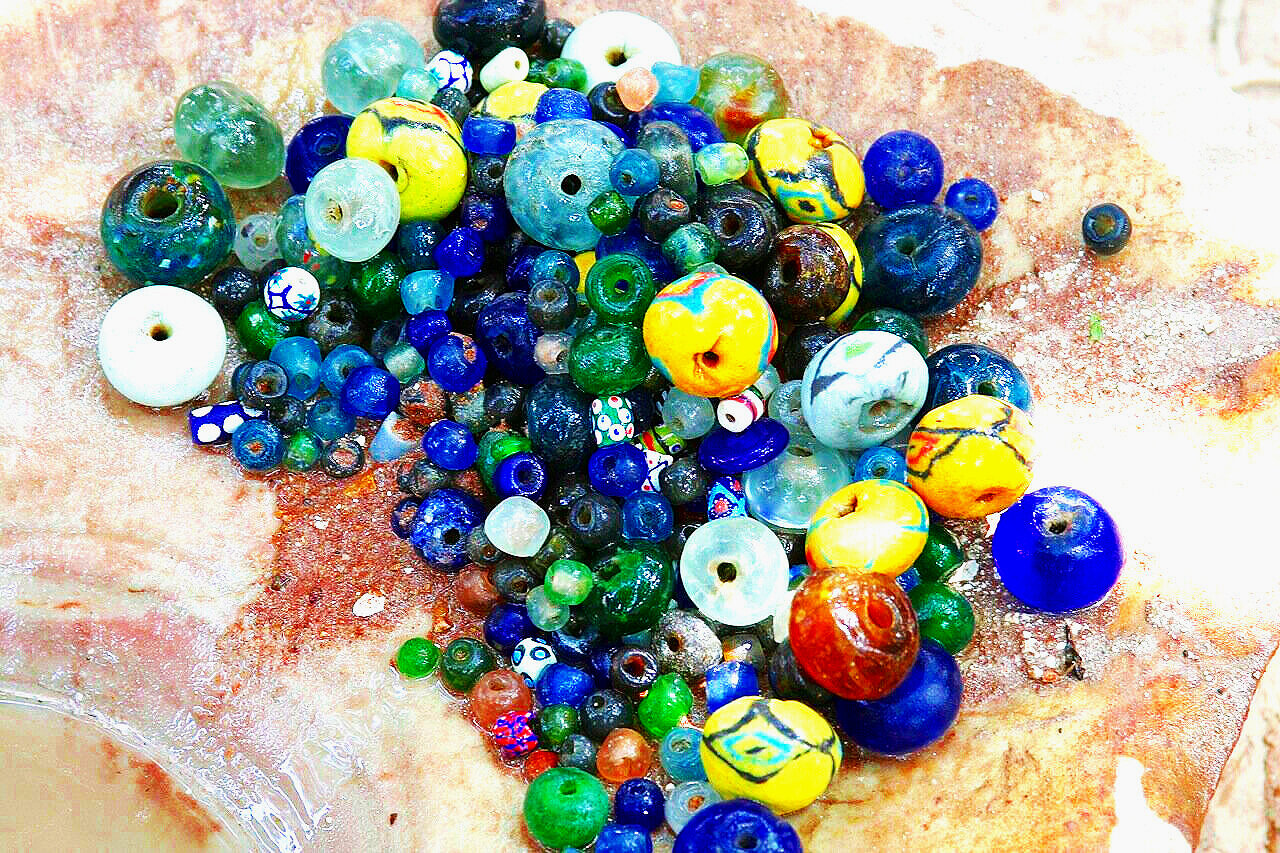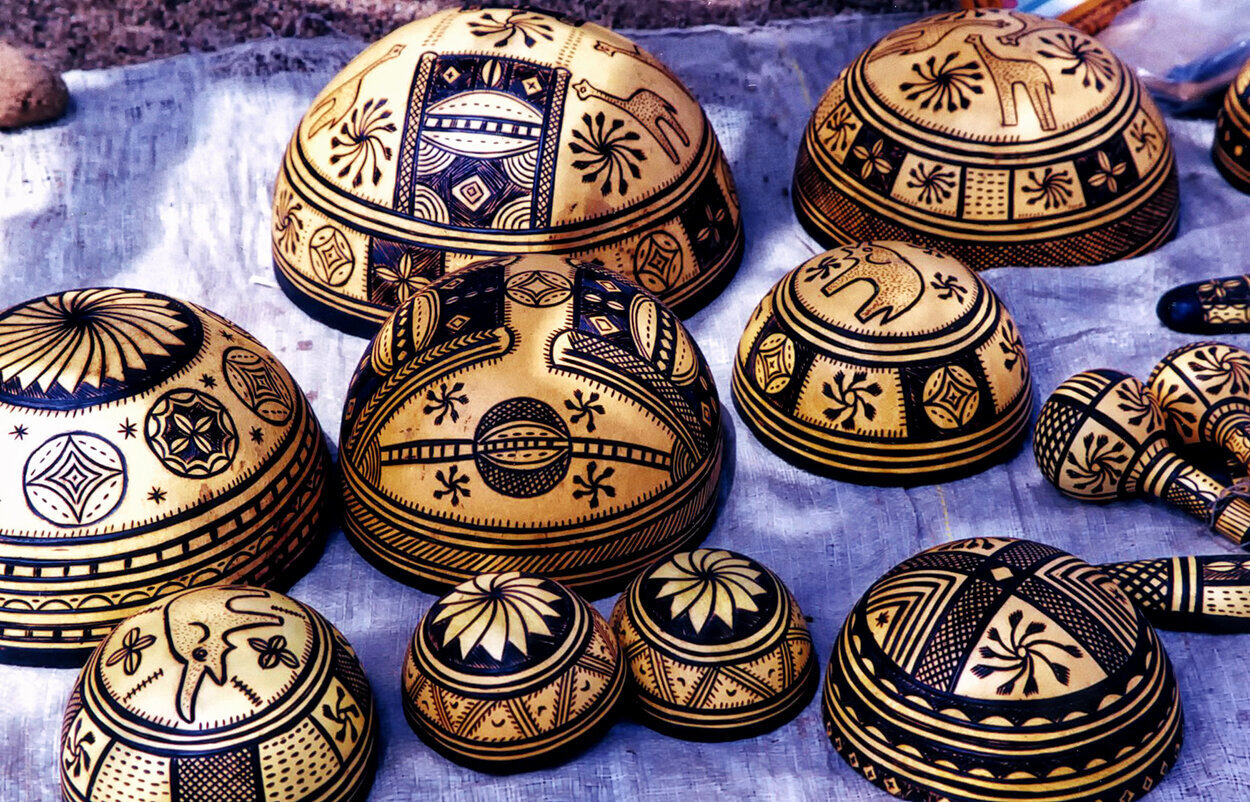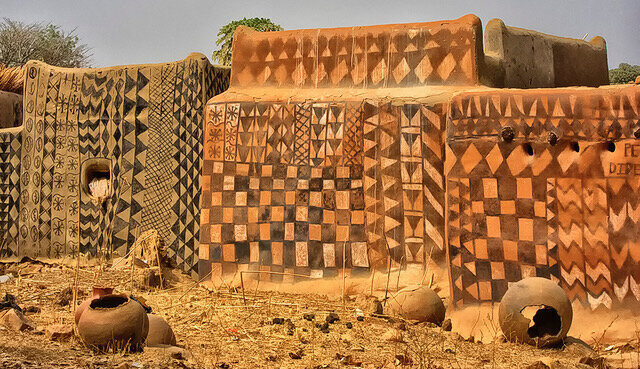
West African Village Architecture
Journey with a quest: Tiebele village, a history book on clay
I had just crossed the dusty land border between Burkina Faso and Ghana. It was May and the land was parched. Clusters of rectangular adobe houses, peaking in circular skirts of thatched grass for relief from the scorching sun, fanned out from the road. Granaries, thatched top to bottom and resembling a giant covered basket, perched on small wooden pegs next to the houses. I had heard of a royal village called Tiebele that was so beautifully painted and stylized as to be a work of art, and it was not far from where I had just entered southern Burkina Faso.
For the next two hours Abdoulaye, an expert on Burkina Faso’s indigenous tribes, and I traveled on a gravely road until we saw a crude signboard pointing the way to Tiebele, only another 20 miles further. The wind kicked up dust like whirling dervishes, nearly obscuring the road in front of us. Finally, Adama, our driver, stopped, and when the dust settled, I could see Tiebele.
Tiebele village dwelling
Tiebele is a 400-year-old royal village inhabited by the Kassena people, a subgroup of the ethnic Mossi people. Formerly fierce warriors, the Kassena today are primarily agriculturists who grow millet, sorghum, and yams. Their adobe dwellings are painted in geometric designs or engraved in low clay relief with symbols like sparrows, insects, fish scales, calabashes, the sun, and the moon; these images reflect the complex symbology and history of the clan.
A member of the royal family greeted us and gave us a tour of his village, called the Royal Court of Tiebele. Constructed for defensive purposes, its labyrinth of narrow paths prevented intruders from attacking in a straight line: to penetrate the courtyards of the compounds, enemies had to walk up three or four steps, then down into an enclosed courtyard, where they could be ambushed. Residents’ houses are shaped in a figure eight for defense purposes. From the top of the fortress house, I could see the figure-eight designs of the closely packed houses and neighbors’ roofs spread with woven mats for sleeping and large covered calabashes (gourds) sturdy enough to hold millet and corn. The flat roofs must also have been used as a lookout point, as occupants could observe invaders below and throw rocks at them or shoot them with bows and arrows.
Young prince of Tiebele
Tiebele village houses are shaped in a figure-eight for defense purposes. Roof used for storing grain like millet and sorghum.
Highlighted figure-eight
Crouching on all fours I made my way through a house entrance, where I encountered another defense measure, a two-foot wall of mud that required me to lower my head as I stepped over it. (Centuries ago, intruders would have been beheaded at this point.) After my eyes adjusted to the dim light, I noticed several circular openings for air on the sides of the walls and shelves, where clay pots were stacked high; next to them many calabashes hung in macramé stockings from the ceiling like ornaments.
The woman who lives here explained that the clay pots and the calabashes must not be broken (as that would bring bad luck), so they are away from her children’s reach. When she dies, the pots and calabashes will be broken and buried with her. She led me through another small opening in a wall to enter the kitchen. I saw mats where she slept with her children; when she dies, these will be used to wrap her dead body before she is buried, and afterward the mats will be burned.
She motioned for me to follow her outside and then up steep steps to the roof, from which I could see the entire Tiebele village.
Calabashes hanging from ceiling inside the house
The crawl-in entrance to one of the royal houses at Tiebele.
Tiebele painted house Burkina Faso
Tiebele elder
Tiebele family












